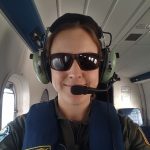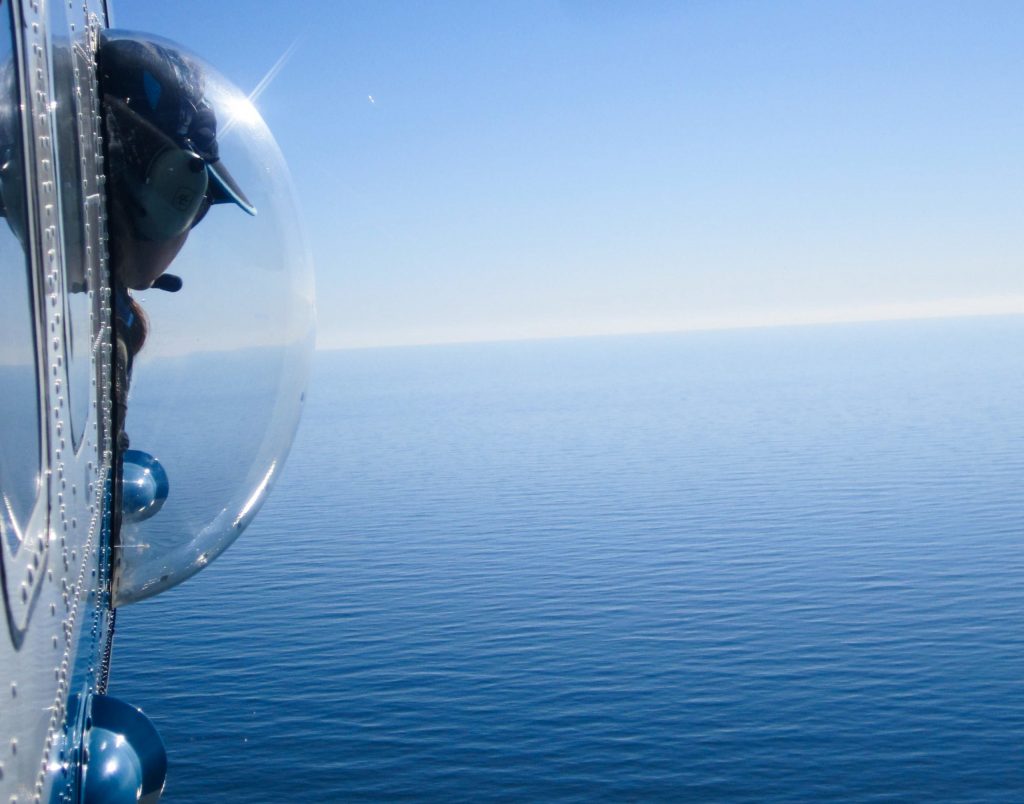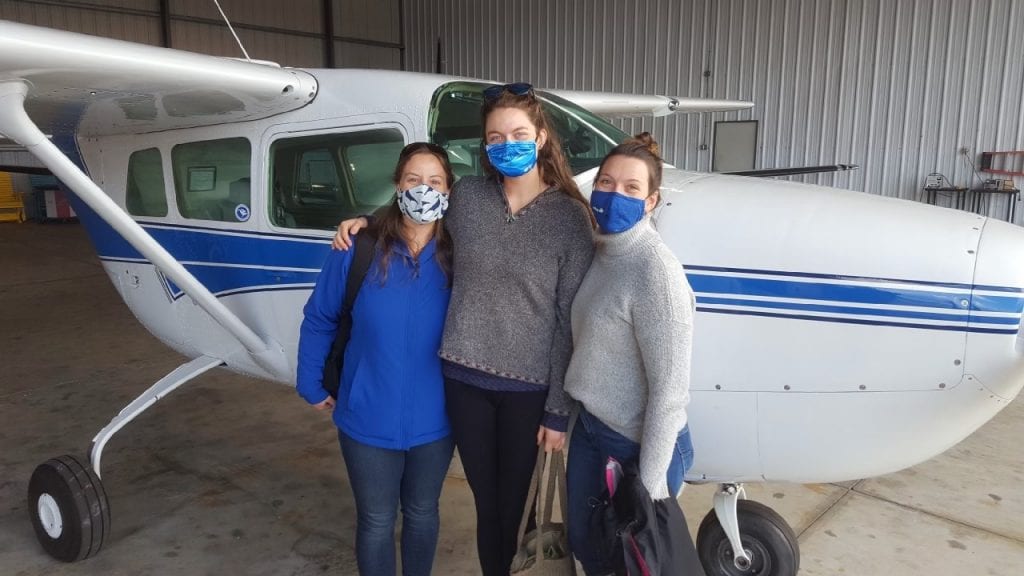
Contributor: Kate McPherson, Team Lead for CMARI’s North Carolina Aerial Team

I first started to imagine a blog for North Atlantic right whales after attending the North Atlantic right whale conference two years ago. I had just been hired to fly as an aerial observer with Clearwater Marine Aquarium Research Institute (CMARI) and was able to attend the conference just a few weeks before our survey season was scheduled to start. Coming off my post-ditch training rush (more on ditch training aka underwater egress training in a future post!) I went into the conference feeling very encouraged about this new chapter in my career. Then the presentations started, and that happy feeling began to deflate.
I remember sitting in my seat as presentation after presentation went by, each one making me feel like there was no way I could make a difference…
You see, North Atlantic right whales are a critically endangered species- only about 360 are alive today. When the right whale conference kicks off each year, researchers provide updates on the number of whales left alive, as well as the ones that have been lost due to vessel strikes and entanglements. Images of these unfortunate whales are often provided, and it can be difficult to watch; even more difficult to feel hope for the survival of this species. I remember sitting in my seat as presentation after presentation went by, each one making me feel like there was no way I could make a difference for the whales I had come to know and love.

Clearly, a new approach for North Atlantic right whales is needed, and after listening to this presentation I thought I might have an idea of where to start.
Then one of the presenters started speaking about how we as right whale researchers and conservationists can get more people interested in North Atlantic right whales, and my ears perked up. Finally, some tips on how to give these whales some positive attention! Usually the only time people hear about North Atlantic right whales is through yet another story about how the species is headed towards extinction. These depressing news articles might mean that more people know what a right whale is, but it doesn’t mean that they will care any more about the species than they already do. It is all too easy to feel overwhelmed by bad news, and usually when people are faced with depressing facts the easiest thing to do is put them out of mind- I know I am guilty of this! Unfortunately, this can mean that fewer people learn about right whales and what they can do to help protect them. Combine this with the fact that right whales are perhaps not the most attractive whale species (whale lice, anyone?) and suddenly you realize that these individuals have a bit of a public relations problem. Clearly, a new approach for North Atlantic right whales is needed, and after listening to this presentation I thought I might have an idea of where to start.

The Importance of Right Whale Research
Before the start of our current survey season, I met (virtually) with CMA and CMARI staff to discuss the possibility of writing a blog about our aerial surveys, a blog that would hopefully give people more information about North Atlantic right whales and some behind-the-scenes looks at the work done by our aerial observers. I was excited by the opportunity to do something to promote awareness of right whales, and I kept thinking back to what I had learned at the conference two years ago: to get people to care about North Atlantic right whales, you need to tell their story. Not just the numbers and statistics, though they are important; you need to tell the stories of these individual whales, who they are and what they have experienced in their lifetimes. And because the right whales are not able to speak for themselves, it is also important to share the stories of the people who work closely with these individuals- that’s where this blog comes into the picture.
…we will finally be pulling back the curtains to give you an inside look at what it takes to complete an aerial survey season.

What are the requirements to be an aerial observer? How do you find right whales from 1000 feet in the air? Will I be able to sit in a small plane for 5-6 hours at a time without losing my focus? These are some of the questions I had when I first began to work as an aerial observer, and I imagine some of you reading this may have the same types of questions, which we will try to answer over the coming weeks. So much training and planning goes into our work even before we get up in the planes, and now we will finally be pulling back the curtains to give you an inside look at what it takes to complete an aerial survey season. We hope this blog will answer some of your burning questions about our right whale surveys and inspire you to learn more about these incredible animals. All of our aerial observers love North Atlantic right whales, whale lice and all, and we want you to love them too- we can’t wait to introduce you to the survey team and hopefully lots of new right whale calves this year!
Follow along as CMARI’s right whale team fly through another calving season.
All research and photos conducted under NOAA permit number 20556-01 unless otherwise stated.